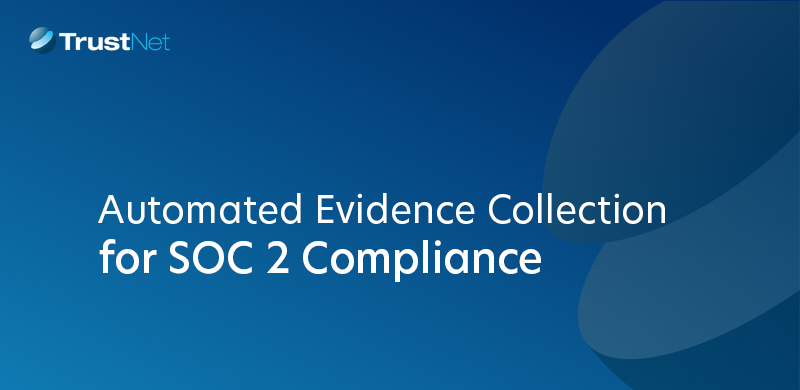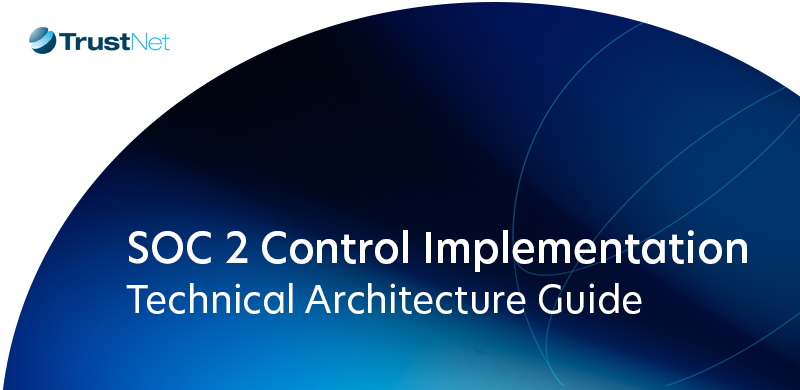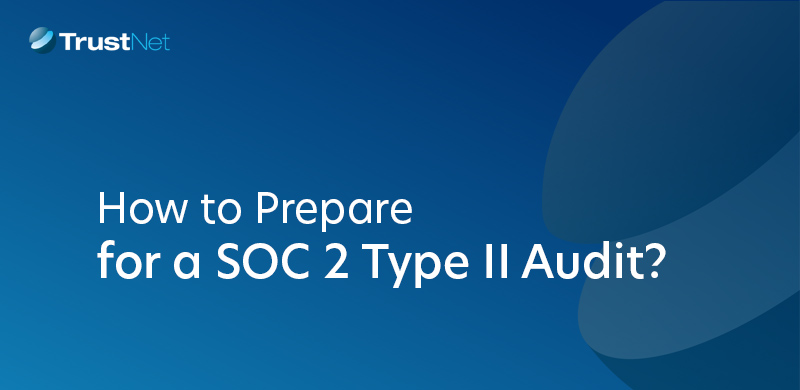PCI DSS 4.0: Updated Password Requirements and Compliance Audit Insights

PCI DSS 4.0 represents a major update, with enhanced security measures to reinforce compliance and mitigate risks for organizations processing, storing, or transmitting payment data. A key focal point of this update is the refinement of password requirements, which serve as a critical defense against unauthorized access.
These updated requirements introduce stricter controls aimed at reducing vulnerabilities and meeting modern cybersecurity demands:
-
- Increased Password Length: Ensures stronger access barriers.
- Complexity Requirements: Incorporates diverse character sets.
- Reset Frequency: Regular updates to minimize risk exposure.
In order to prevent possible data breaches and preserve PCI compliance, organizations need to adjust to these developments. However, dealing with these new standards frequently prompts concerns about their operational effect and execution, especially for companies that are already overburdened with their current obligations.
This whitepaper provides a thorough analysis of the updated password requirements under PCI DSS 4.0, highlighting significant changes and their effects on your company. To keep your operations safe and audit-ready, we’ll also offer doable solutions for bringing your systems into line with the most recent compliance requirements.
Key takeaways include:
-
- An in-depth look at password changes, from increased length to complexity enhancements
- Insights on balancing security and operational efficiency during compliance adjustments
- Actionable steps to prepare for audits with confidence and clarity
Key Changes in PCI DSS 4.0 Password Requirements
With the introduction of PCI DSS 4.0, the standards for password requirements have been revamped to address modern cybersecurity threats. These changes focus on enhancing password length and complexity, as well as resetting protocols to reinforce the protection of sensitive cardholder data.
— Increased Password Length
The minimum password length has been extended to 12 characters, replacing the less robust thresholds from earlier versions. By increasing the length, the standard creates a significantly stronger barrier against brute force attacks, where automated systems attempt to guess passwords.
-
- Why it Matters: Longer passwords exponentially increase the difficulty for attackers to crack credentials.
- What to Do: Businesses should ensure all systems enforce the 12-character requirement and communicate these changes clearly to their teams.
While this adjustment may require user retraining and minor operational changes, its benefits in bolstering security make it a vital defense mechanism.
— Complexity Requirements
PCI DSS 4.0 also updates its stance on password complexity to combat increasingly sophisticated attacks. Passwords must now include a diverse mix of uppercase letters, lowercase letters, numbers, and special characters.
- The Goal: To create passwords that are harder for attackers to predict or decrypt.
Implementation Tips:
-
- Use password strength indicators in user-facing systems.
- Train employees in the importance of using unique and complex passwords.
This step takes cybersecurity to the next level while encouraging users to establish stronger habits during password creation.
— Password Reset Frequency
To maintain security without undermining usability, PCI DSS 4.0 recommends resetting passwords every 90 days.
-
- Balanced Approach: This time frame minimizes exposure without causing password fatigue.
- Flexibility Offered: For organizations using risk-based authentication, exceptions to this rule may apply, adding adaptability to compliance strategies.
By addressing these updates now, businesses can stay ahead in their efforts to secure cardholder data, ensuring both PCI compliance and robust system safeguards.
For more on our PCI DSS 4.0 services Click Here
Detailed Breakdown of New Password Standards
The PCI DSS 4.0 enhancements ensure stronger defenses against unauthorized access while aligning with broader compliance goals. Here’s a closer look at what’s changed and what it means for organizations managing sensitive cardholder data.
1. Minimum 12-Character Length
One of the core updates is the requirement for a minimum password length of 12 characters. This change builds on the understanding that longer passwords are significantly harder to crack through brute force methods.
Why It Matters:
-
- Longer passwords exponentially increase the time and effort required for attackers to breach systems.
What You Can Do:
-
- Update password policies across all platforms.
- Encourage users to adopt memorable but long passphrases for practicality.
This seemingly small adjustment adds layers of protection to critical systems.
2. Special Characters, Uppercase, and Lowercase Letters
Enhanced complexity rules are another pillar of the new password security guidelines. Users must now include a combination of character types to create stronger, more unpredictable passwords.
Key Components:
-
- At least one uppercase letter.
- At least one lowercase letter.
- Numbers and special characters (e.g., @, $, %).
These measures reduce the likelihood of successful dictionary-based attacks, where criminals use common words to guess passwords. Providing training sessions or tools like password validators can ensure smooth adoption.
3. 90-Day Reset Policy
Passwords must be changed every 90 days to further enhance security. This policy strikes a careful balance between usability and protection. Frequent changes limit opportunities for compromised credentials to be exploited. However, organizations can consider phased reminders to prevent password fatigue among employees.
4. Exceptions for Continuous Risk-Based Authentication
For organizations leveraging advanced risk-based authentication methods, an exception to the reset policy may apply. This approach adds flexibility to PCI DSS compliance without compromising on password security.
Multi-Factor Authentication (MFA) Requirements
To strengthen access control, PCI DSS 4.0 has made Multi-Factor Authentication (MFA) a mandatory requirement for accessing the Cardholder Data Environment (CDE). This measure is designed to provide an additional layer of security, protecting sensitive data even if passwords are compromised.
Mandatory MFA for CDE Access
MFA is no longer optional when it comes to the CDE. This applies to all users — administrators, personnel, and third-party vendors accessing systems containing cardholder information. A password alone is insufficient due to the evolving sophistication of cyberattacks.
Why MFA is Crucial:
-
- Combine “something you know” (like a password) with “something you have” (like a code or device).
- This makes it extremely difficult for attackers to bypass authentication even if they steal login credentials.
Mandatory MFA ensures that only authorized users gain access to critical areas where cardholder data resides, reducing the potential for breaches.
Implementation Guidelines
Successfully implementing MFA requires a thorough understanding of the unique needs of your organization. It’s not just about compliance; it’s about creating a streamlined and secure experience for users.
Here’s how to get started:
1. Choose the Right Tools:
-
- Select MFA solutions that are compatible with your network and applications.
- Options commonly include codes sent to a mobile device, physical security keys, biometric verification, or app-based authentications.
2. Prioritize Usability:
-
- Ensure MFA solutions are user-friendly to minimize resistance during implementation.
3. Train Your Team:
-
- Educate employees on the importance of safeguarding the CDE and how MFA protects cardholder data.
Impact on Legacy Systems
With older infrastructure, meeting updated password policies and security protocols can be complicated. However, understanding the impact and planning strategically can help mitigate disruptions while ensuring compliance.
– Minimum 8-Character Exception
PCI DSS 4.0 sets a standard for 12-character passwords, but exceptions exist for legacy systems unable to support this length. For these systems, a minimum of 8 characters is permissible.
What This Means:
-
- Systems still operating on outdated platforms can remain compliant under specific conditions.
- Organizations must document these exceptions and implement other compensating controls to strengthen password security.
While this provides some flexibility, relying on exceptions long-term may expose vulnerabilities.
– Upgrade Considerations
To maintain robust security and streamline compliance, upgrading legacy systems should be a priority.
Key Steps to Take:
-
- Assess current infrastructure for compatibility with PCI DSS 4.0 requirements.
- Prioritize updates that enhance password management features and overall system resilience.
- Plan for phased upgrades to reduce operational downtime.
Best Practices for Password Management
A key component of robust cybersecurity is efficient password management. Organizations must have strong procedures to safeguard sensitive data and vital systems in light of the constantly changing nature of cyber threats.
1. Password Managers
Implementing password managers can simplify the way employees create and store secure credentials across platforms.
Why Use Them?
-
- By creating complicated, one-of-a-kind passwords for every account, password managers lessen the danger associated with using the same credentials again.
- By safely storing passwords, they make sure staff members don’t have to rely on their memory or risky techniques like writing them down.
These technologies increase everyday operations’ efficiency and security by automating the saving and retrieval of passwords.
2. User Training and Awareness
Educating employees plays a crucial role in password management. Even the most sophisticated systems are vulnerable if users don’t follow best practices.
Key Training Points:
-
- Encourage employees to recognize phishing attempts and avoid sharing passwords.
- Even when utilizing a password manager, emphasize the value of coming up with strong passwords, such as passphrases.
- Provide step-by-step guidelines for secure login practices.
Regular awareness sessions keep password security at the forefront and reduce the likelihood of human error.
3. Monitoring and Auditing
Ongoing monitoring and auditing ensure continuous improvement in password management strategies.
Best Practices:
-
- Use automated tools to monitor for unauthorized access or unusual login patterns.
- Schedule regular audits to validate compliance with cybersecurity policies.
- Review password policies and enforcement mechanisms to address emerging risks.
Preparing for PCI DSS 4.0 Compliance Audits
Although preparing for a PCI DSS 4.0 compliance audit might seem difficult, it is much easier with the right planning. Businesses can simplify their strategy and successfully demonstrate compliance by concentrating on key areas, including gap analysis, comprehensive documentation, and addressing typical challenges.
— Gap Analysis
A gap analysis is the foundation of a successful PCI DSS assessment. This involves evaluating your current security practices against PCI DSS 4.0 requirements to pinpoint areas of non-compliance.
Steps to Conduct a Gap Analysis:
-
- Identify existing security controls and compare them with the new standard.
- Document any gaps and assign priorities based on risk levels.
- Develop a clear action plan to close those gaps before the compliance audit begins.
By starting with a gap analysis, organizations can address weaknesses proactively and avoid surprises during the assessment.
— Documentation Requirements
Accurate and complete documentation is essential for passing a compliance audit. Auditors will need detailed records to verify that processes and controls align with PCI DSS 4.0 standards.
Key Documentation to Prepare:
-
- Policies and procedures for password management, access control, and monitoring.
- Evidence of system configurations, such as firewall, authentication, and encryption settings.
- Records of employee training sessions related to security practices and PCI DSS compliance.
Keeping records up to date simplifies the audit process and ensures the organization maintains a clear trail of compliance efforts.
— Common Audit Challenges
Even with careful preparation, specific challenges frequently arise during PCI DSS assessments. Being aware of these can help you address them head-on.
Interpreting Requirements:
- Some requirements may seem ambiguous. Consult your Qualified Security Assessor (QSA) to clarify expectations.
Legacy Systems:
- Outdated systems may struggle to meet updated standards, requiring documentation of exceptions or compensating controls.
Employee Buy-In:
- Gaps in training or inconsistent adherence to policies can lead to delays or failed audits.
Preparing for these issues in advance reduces risks and bolsters confidence during the compliance audit process.
Implementation Timeline and Deadlines
Planning for PCI DSS 4.0 is critical to meet compliance deadlines efficiently. Establishing a clear compliance timeline helps organizations stay organized, minimize risks, and address key requirements effectively.
Key Dates for Compliance
Compliance with PCI DSS 4.0 happens in multiple phases. Below are the typical milestones:
Months 1–4:
- Define your PCI scope and determine the applicable compliance level.
- Conduct a gap analysis and risk assessment to identify areas of non-compliance.
- Start implementing necessary policies and controls.
Months 5–8:
- Complete your compliance assessment through a Self-Assessment Questionnaire (SAQ) or Report on Compliance (RoC).
- Address any gaps through timely remediation efforts.
Month 12:
- Finalize annual recertification through a RoC or SAQ.
Phased Approach Recommendations
To streamline the transition to PCI DSS 4.0, adopt a phased strategy:
- Begin by consulting accredited Qualified Security Assessors (QSAs) like TrustNet for expert guidance.
- Perform ongoing monitoring and address risks early to prevent delays.
- Schedule regular progress reviews to ensure all tasks align with the compliance timeline.
By working closely with trusted QSAs and following a step-by-step approach, organizations can meet PCI DSS 4.0 requirements confidently while strengthening overall security.
The Road Ahead in PCI DSS Compliance
In this whitepaper, we have emphasized key components of an effective PCI DSS compliance approach, such as:
Understanding Updates:
- Staying informed about PCI DSS 4.0 requirements and their impact on operations, particularly legacy systems.
Best Practices for Security:
- To improve password security and general protection, use solutions like password managers, train staff, and conduct regular audits.
Streamlined Preparation:
- Leveraging actionable plans, such as gap analyses, thorough documentation, and phased timelines, to make the transition manageable.
Expert Support:
- Consulting expert entities like TrustNet ensure compliance efforts are guided by professional insights and solutions
Proactive compliance is more than adhering to timelines; it instills a culture of vigilance and continuous improvement. PCI DSS compliance helps companies safeguard not only sensitive financial data but also their reputation and customer relationships.
and secure your business with confidence. Contact us today.
Glossary of Terms
— Compliance Audit
An assessment process to evaluate whether an organization meets required regulatory or security standards. For PCI DSS, this involves reviewing policies, procedures, and controls to ensure adherence to security requirements.
— PCI DSS (Payment Card Industry Data Security Standard)
A set of security guidelines created to protect payment card information. It applies to any organization that processes, stores or transmits cardholder data, ensuring secure handling and storage practices.
— QSA (Qualified Security Assessor)
A professional or an organization certified by the PCI Security Standards Council to conduct PCI DSS assessments. QSAs provide expertise and guidance to help businesses achieve and maintain compliance.
— RoC (Report on Compliance)
A detailed report created during a PCI DSS assessment by a QSA. It documents the findings of the assessment, including any non-compliance issues and steps taken to resolve them. Businesses use this report to demonstrate compliance with acquirers or payment brands.
— SAQ (Self-Assessment Questionnaire)
A validation tool for smaller merchants or service providers who may not require a full audit. It consists of a series of questions based on the specific PCI DSS requirements relevant to the organization’s cardholder data environment.
Subscribe to the TrustNet Newsletter
actionable cybersecurity strategies, and TrustNet’s cutting-edge solutions.





